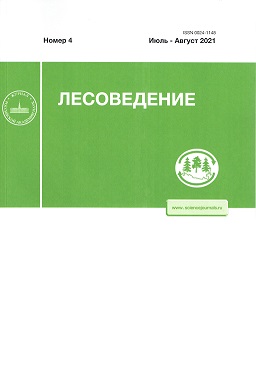ISSN: 0024-1148 Russian Journal of Forest Science. 2011, No. 2, pp. 51-61
| REGENERATION PROCESSES UNDER STAND CANOPY IN BROAD-LEAVED-CONIFEROUS FORESTS OF THE SOUTH URALS |

| Davydychev A.N., Gorichev Yu. P., Kulagin A. Yu., Suleimanov R.R. Institute of Biology. Ufa Scientific Center. Russian Academy of Sciences: 450054 Ufa, pr. October 69 South Ural State Nature Reserve: 453560, Republic of Bashkortostan, Beloretsk district, p. Roaring |
E-mail: shur25@yandex.ru |
Received: 24 april 2009
Specific features of natural regeneration were studied in undisturbed, weakly disturbed and secondary broad-leaved-coniferous forests in the territory of the South Ural State Reserve. Ecological and silvicultural peculiarities, species richness, abundance of undergrowth and grass-moss layer, as well as the soil cover are briefly characterized. The forest communities are shown to have a complex structure and polydominant composition of the tree layer formed by more than ten forest-forming species. The data on the morphology and chemical properties of the mountain forest soils are presented. Under the canopy of the undisturbed, weakly disturbed and secondary broad-leaved-coniferous forests, the abundance of the regrowth of the main forest-forming species is 3.5 to 60.5 thousand ind. ha-1(coniferous species are from single trees to 58.3 thousand ind. ha-1). The number of young trees in the regrowth is related to their position in relief. Some adaptive peculiarities promoting the successful renewal of tree species were revealed. In the undisturbed and weakly disturbed broad-leaved-coniferous forests, natural successions take place. In the secondary ones appeared on the place of these forests, dark coniferous species gradually restore their positions as edifiers. The absence of anthropogenic impact is the most important condition for the restoration of the initial natural structure of community.

